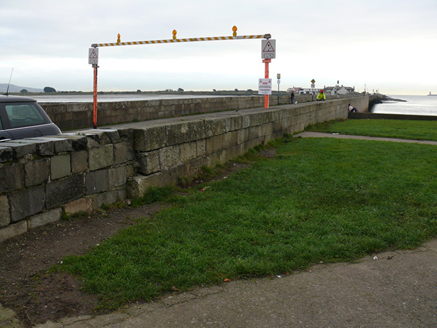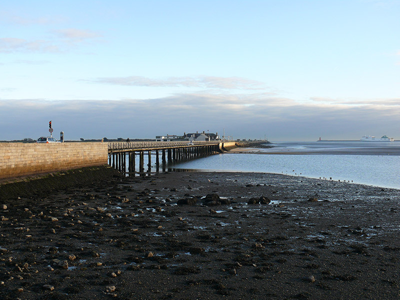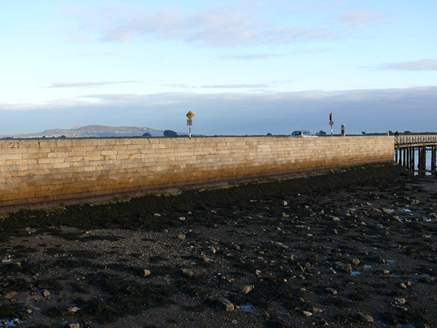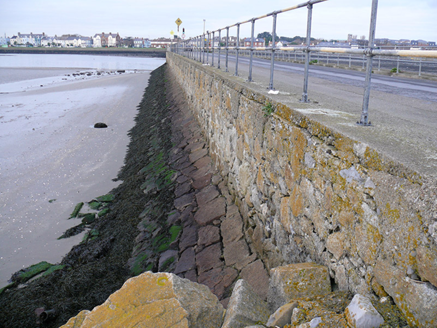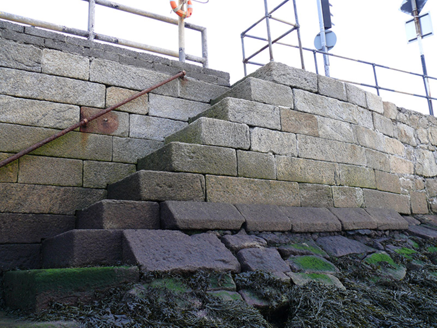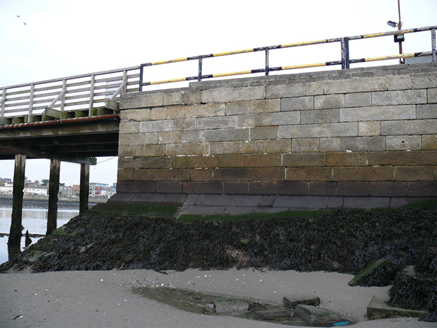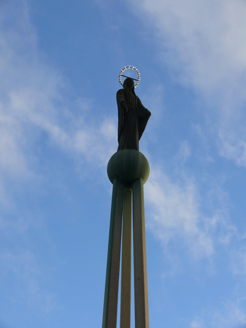Survey Data
Reg No
50030056
Rating
Regional
Categories of Special Interest
Architectural, Historical, Technical
Original Use
Building misc
In Use As
Building misc
Date
1815 - 1825
Coordinates
321332, 235812
Date Recorded
03/12/2014
Date Updated
--/--/--
Description
Breakwater, built 1819-24, running southeast from Clontarf. Cut granite walls to northwest part, battered to base and splayed to join promenade walls at Clontarf end. Timber bridge over channel, with timber carriageway, supports and parapets, and having cut granite steps to northeast and southwest elevations of wall beyond bridge. Stepped chamfered granite batter to walls adjoining wooden bridge. Uncoursed granite and limestone walls to centre portion, battered to base, with steel railings. Limestone and granite boulders forming wall to southeast portion. Tarmac promenade to top with later bathing shelters, having concrete steps to shore to northeast and southwest elevations. Cut granite slabs and stone setts visible to surface of promenade to either end of bridge. Elevated Marian statue on concrete piers and tiled plinth to end of promenade, dated 1972. Lower half-tide wall, comprising limestone and granite boulders, continuing beyond promenade, terminating at lighthouse.
Appraisal
The Bull Wall was constructed in the early decades of the nineteenth century as part of a scheme to deepen the harbour at Dublin Bay, which became congested with sand and silt carried by the Liffey and the Dodder rivers. The resultant sandbanks posed severe problems for navigation and maritime trade. The South Bull Wall was completed in the mid-eighteenth century, and proposals for a northern equivalent, stretching from Clontarf, were first put forward in 1801, by Captain William Bligh, who had undertaken a detailed navigational survey of the bay. George Halpin, the City Engineer, approved plans by the Ballast Board to build the wall at an angle to its southern counterpart in order to avoid damage from the easterly swell. The battered stone walls of the pier are characteristic of marine engineering. It is an early and highly successful feat of civil engineering, which made a significant contribution to the development of Dublin as a centre of trade and Ireland as a producer. The wall resulted in a build-up of silt and sand to the northeast, resulting in the unintended creation of Bull Island, a nature reserve and recreational amenity. The setting is enhanced by the concrete bathing shelters, added in the twentieth century, and by a series of carved granite distance markers along the promenade, which highlight the value of the wall for recreation.
